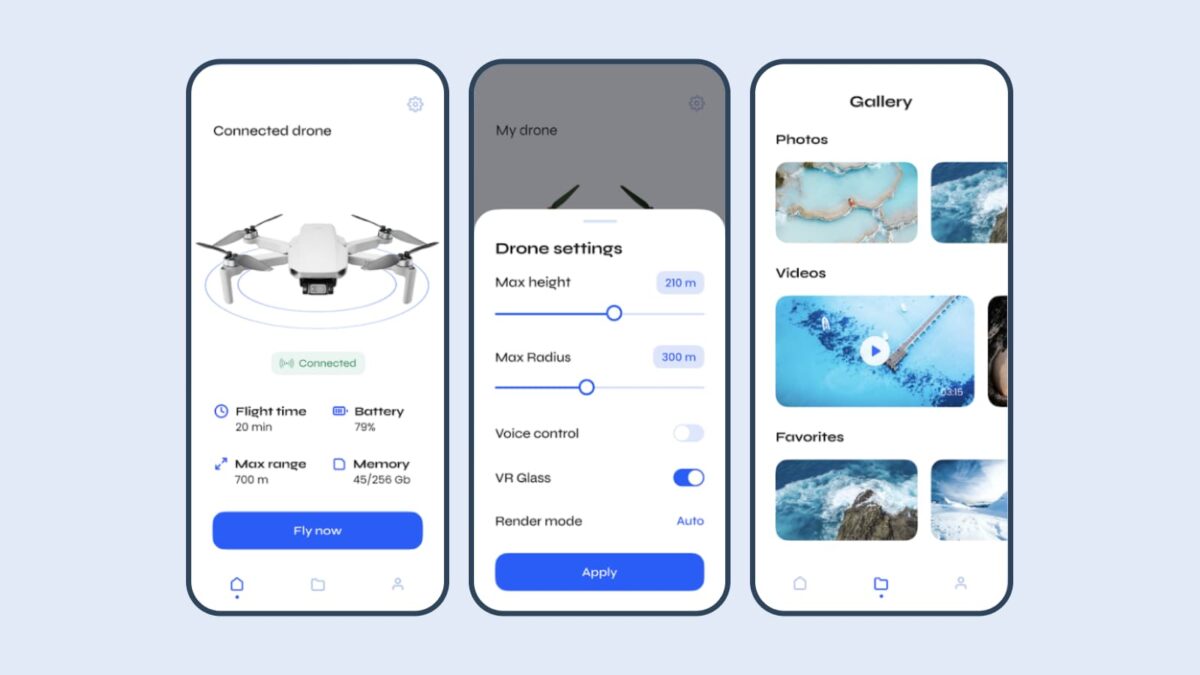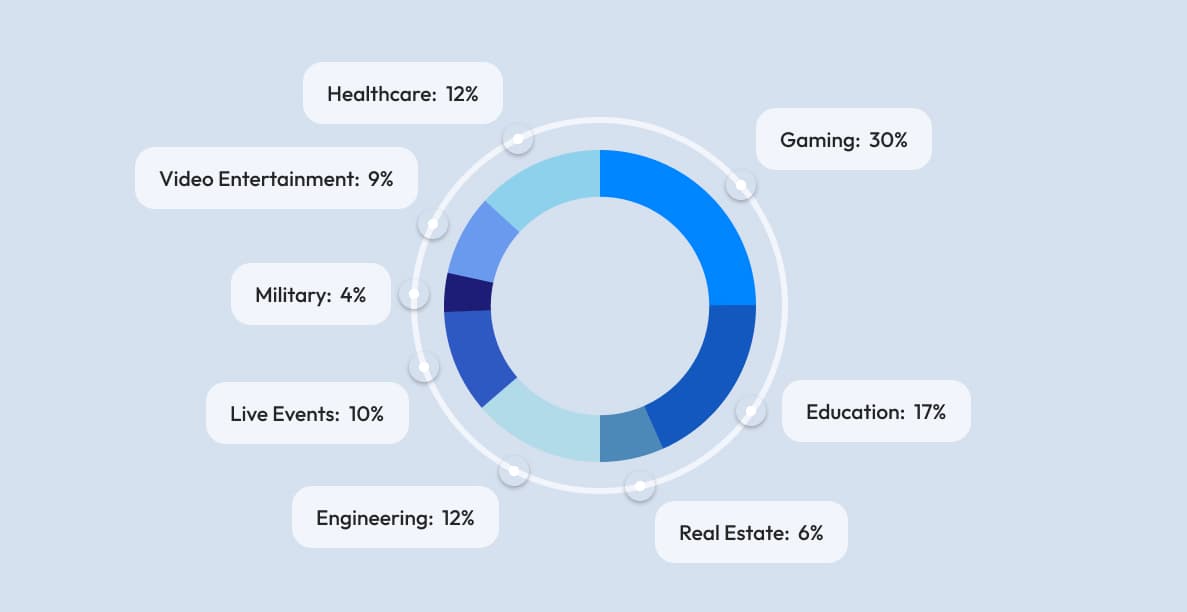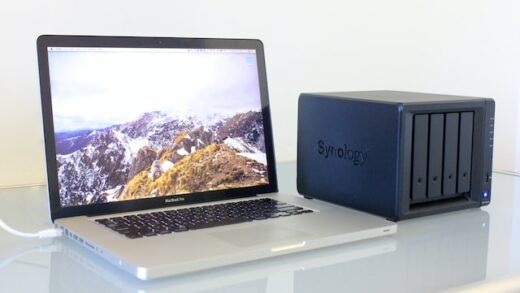There has been a real boom in Virtual Reality (VR) for the last few years. This market sphere is new compared with others, so it is difficult to understand how much VR creation expenses. Fortunately, we have prepared a complete guide about the major cost factors influencing total expenses. This guide will describe the costs of developing a VR app, offer price samples of popular solutions, and describe methods for making money from such products.
Factors Affecting Virtual Reality App Development
You must be aware of the primary aspects of VR development. Look at the key aspects in more detail.
Complexity and scope
Developing complex solutions will demand more time, money, and expertise. Designing a VR product with advanced features such as intricate 3D models and pleasant user relations will raise both the sophistication and the price of the VR app.
Developing a VR product typically costs between $20,000 and $150,000. It has extensive features and a starting price of $350,000, which can exceed that amount.
Platform
Choosing the platform is a significant determination of the total cost. Cutting-edge, immersive environments such as the Oculus Rift S or connected computer frameworks such as the Apple Vision Pro to a more sophisticated user experience will demand complicated tech development processes and the involvement of specialized personnel. For easier VR systems such as Samsung Gear VR and Google Cardboards, cheaper and easier solutions will be required. Still, extra platform necessities and their tuning affect the time and struggle needed for the creation assignment.
Cost Choice of VR Development Partner
Selecting the right vendor is important for influencing the cost of VR products. High charges of competent and esteemed developers may be the case, but they often deliver good rates and innovativeness. The team of programmers’ human capital directly impacts the general project expense and triumph. Nevertheless, another part you should be aware of is the region where you are hiring an app developer, which also influences VR app costs, as programmers have different rates per hour in other areas. Famous outsourcing destinations are below:
- Western Europe: $80-$150
- Central and Eastern Europe: $40-$100
- North America: $100-$200
- Asia: $30-$80
- Australia: $100-$150
- South America: $30-$80
So, it makes a difference in practice. North America has the most elevated rates by and large, as it has earned an image of being a tech-oriented region. Still, it is worth mentioning that high prices do not necessarily lead to better outcomes for the product-creating procedure. In contrast, Asia has reasonable costs and many VR experts. In a good light, Central and Eastern Europe solves this problem since it has low costs compared to most regions and boasts a rich history in providing IT products, a good grasp of new technologies, and fluency in English.
Development Stages and Their Impact on VR App Cost
Creating VR systems significantly differs from traditional app creation. It needs more resources, more diversified skills, and special hardware. Now, let’s talk in detail about the concrete steps of VR creation and how each can influence your project’s overall cost.
Step 1. Select Your VR Hardware
You would have to wear a headset to make a completely immersive VR. Before learning about making a VR app, let’s discuss some good hardware options. A well-optimized VR app assures a smooth and reflexive user experience on your headsets.
Step 2. Choose Your 3D Engine
After you have selected your VR hardware, the next step will be to select your 3D machine. Unity and Unreal are the two most utilized in building VR experiences. While both are brilliant choices, versatility and ease of operation make Unity a personal favorite for our company. If you wish to make an easy, portable VR solution, the Google VR SDKs are good enough.
Step 3. Crafting the User Experience
The user experience is essential for any VR application. From navigation to interaction, everything within your app design affects the user experience. A good UX application might cause your VR project to go up.
Step 4. Design the VR User Interface
Populate your virtual world with 3D samples and animations. Tools like Autodesk or Blender can help. Remember that everything should be stereoscopic, integrate UI with 3D interactions, and position UI elements inside the comfortable visibility zone. For mobile VR, try to use eye-tracking technology for more intuitive interactions.
Step 5. Optimize for Performance
To ensure a smooth experience in VR, an application should be developed that executes at 60 FPS. Test applications on an actual device – not just in the development environment. Use the built-in profiler to detect performance problems and optimize efficiency.
Step 6. Rigorous Testing
Thoroughly test your VR app before its release, finding and fixing all bugs. Testing VR apps usually requires more than regular applications. Bug detection and enhancement of user acceptance can be done through tests. Employ graphics engines and their built-in testing features to see where you need to optimize performance.
Note: At Cleveroad, we offer VR app development solutions and expert services to make the entire process seamless, from concept to deployment. By working on the integration of engines like Unity and Unreal, we ensure your application runs efficiently across diverse hardware (like Meta Quest or HTC Vive). Our focus is on optimizing 3D environments and logic to create an efficient and high-quality user experience.

What Is Virtual Reality App Development Cost?
The exact price of creating a VR app is difficult to determine. Every app must have a minimum viable product (MVP) functionality set to help estimate its costs; this is an essential fact. Any app that includes VR features can be used, whether it’s a business e-commerce app or a multiplayer game designed for a specific headset. The main functions will differ based on the application. It’s difficult to accurately define the expense of developing your virtual reality application because it relies on its complexity, features, and operating platform. Here’s some information on the price of creating a VR app based on the complexity of the VR solution:
Basic VR apps
Basic VR app construction takes a relatively short period and normally presents primary navigation, elementary relations, and limited 3D models whose production expenses can be between $20,000 and $50,000.
Medium-complexity VR solutions
Medium complexity VR solutions offer advanced features such as complicated interactions and 3D model viewing, typically priced between $50,000 and $80,000.
Moderately complex VR apps
Relatively complex VR apps include interactive environments, realistic graphics, some user settings, and more, with costs ranging from $80,000 to $150,000.
Advanced VR apps
Cutting-edge VR apps provide high-quality graphics, complex AI, and help for multiple users, requiring a significant development period and expensing between $150,000 and $500,000 or more.
Infographic: VR App Price Breakdown
The total price of creating a VR system can vary depending on the industry domain sorts. For instance, a pie chart represents the price of developing an AR application for a particular industry.

Monetizing VR app
There are some of the most prevalent sorts of monetization:
Free-to-use
Your app can be accessed for free. Some extra benefits will only be accessible if users are willing to pay. They should either turn off ads or introduce some new attributes. They ought to cover the cost. This model serves multiple applications and can be beneficial given a deliberate approach. In the free model, one could theoretically monetize it should advertisements be introduced.
In-app purchases
This free-to-use model has additional benefits, such as allowing the players or users to buy features in a game or business app that they wish would provide new functionality. The fee for virtual goods can change based on their value in the app. You can add this model to a free-to-use app that offers some sweets, unlike others that require payment.
Premium
You can only access these apps by making a payment. Users who make an initial payment for this app receive it without ads, along with all the appealing add-ons.
Wrapping up
Making a VR app is difficult if you are unaware of such a market area. Its cost counts on various development parts, such as the platform on which you complete the app and the sophistication and range you expect from your startup. A necessary part of the total cost is choosing the outsourcing destination because the different regions offer different work prices. Furthermore, you need to decide the sort of monetization app you choose. So, using this guide, you get a rough image of creating a VR app and its development, from selecting your VR hardware to testing your product. Make your VR idea succesfull!









